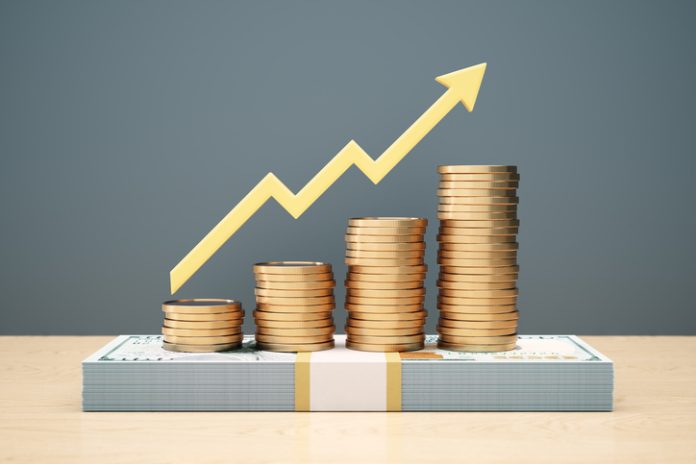Forget crypto. The ultra-rich are past that.
Sure, Bitcoin had its moment in the sun. It made headlines, minted millionaires, and lit up Twitter feeds.
But if you think that’s where real money is hiding now, here’s the memo:
Your favourite billionaires are already shifting their cash elsewhere.
And the best part?
You don’t need to be one of them to steal from their playbook.
1. Pre-IPO Secondary Share
Before a company like Stripe, SpaceX, or OpenAI goes public, insiders and early investors sometimes sell shares through private secondary markets.
These trades are usually off-limits to everyday people but not to family offices or ultra-high-net-worth individuals.
You, too, can leverage similar opportunities if you seek early bird investments like the Zyon Grand Showflat. Investments like these offer early bird benefits regardless of status, creating a currency-proof cash vault for any budget.
Why it matters:
Pre-IPO shares often provide returns of 10x to 50x if the company is successful. It’s risky, but billionaires mitigate that risk by accessing dozens of deals through private brokers.
Can anyone use this?
Yes, through a platform like Forge Global, EquityZen, or getting cosy with startup-focused investment groups.
Some allow investments starting at $10,000.
2. Agricultural Land in High-Yield Zones
You know what billionaires love more than gold? Dirt. Not just any land but strategic agricultural land in regions where food demand will surge.
Forget the Swiss Alps. Instead, imagine Zambia’s fertile valleys, Uzbekistan’s greenhouse boom, and, of course, Brazil’s soy fields.
Why?
- Rising population = rising food demand
- Land value appreciates with infrastructure and foreign investment
- Cash flow comes from leasing land to farmers or agri-corporates
Warren Buffett once said, “Buy farmland, and you’ll produce food forever.” Guess we finally listened.
Hack for regular investors:
Platforms like FarmTogether or Harvest Returns let everyday people buy into these same plots with as little as $15,000.
3. Branded Residences in Asia: Real Estate with ROI + Reputation
While not your typical investor zone, the wealthy are flooding branded residence projects tied to iconic names like Four Seasons, Ritz-Carlton, and Bulgari, especially in cities such as Singapore, Bangkok, and Kuala Lumpur.
One standout example? Zyon Grand, Singapore.
This development is not your average high-rise. It’s a next-level branded residence project fusing luxury living, technological intelligence, and high-end design.
Pro-tip for readers:
Branded residences often outperform traditional luxury condominiums in terms of resale value and rental yield. They’re a great entry point for buyers who want to combine asset preservation with prestige.
4. Second Passports via Real Estate
Wealth, stability, and mobility are inseparable. The truly wealthy do more than just buy property; they secure second passports and political insurance.
Countries such as Portugal, Malta, Greece, and St. Kitts offer citizenship or permanent residency in exchange for property investments.
This gives you:
- Visa-free travel to 100+ countries
- Tax benefits or offshore banking access
- A Plan B for political or economic turmoil
Why it matters:
More than 30% of ultra-wealthy individuals now hold two or more passports, according to Henley & Partners.
Yes, you can do this too:
Greece’s Golden Visa starts at €250,000 in real estate. Portugal’s old rules may be changing, but Cyprus and St. Lucia remain wide open.
You just need sound legal counsel and a verified route.
5. Data Centers and Digital Infrastructure
Some major players are opting out of tech stocks. Instead, they are opting to own the physical data infrastructure (the buildings, servers, and fiber optic cables) that power the internet.
These moguls are snapping up:
- Micro data centres in emerging markets
- Server farms in Nordic countries (for cooling efficiency)
- Cell towers and digital real estate
Why it works:
It’s recession-proof. As long as people stream Netflix and back up data, these assets print money.
Access point for normal investors:
REITs (Real Estate Investment Trusts), such as Digital Realty Trust (DLR) or Equinix (EQIX), let you ride this wave without needing millions.
6. Lending, Not Borrowing
Tides are turning, and the 1% are becoming bankers. Instead of taking loans, they lend out money privately. It’s called private credit, and it’s booming.
Family offices and ultra-rich investors lend to:
- Small businesses rejected by banks
- Other wealthy individuals who want fast loans without paperwork
- Developers who need bridge financing
Return:
8% to 20% annually, often secured against hard assets.
Platforms like:
Percent.com, Cadence, and even small private lenders are opening this to accredited investors.
7. High-Value Art that Lives in Freeports
Freeports are ultra-secure warehouses in places like Geneva and Singapore where billionaires store:
- Rare paintings
- Vintage wines
- Jewellery
- Watches
However, these assets are not meant to gather dust; they appreciate and remain untaxed until they are sold.
Why it works:
By parking a $10M Picasso in a freeport, it’s protected from:
- Market crashes
- Government seizures
- Legal issues
Insider trick:
You can now fractionally own artwork through platforms like Masterworks, letting you co-own a Banksy with just $500.
8. Private Aviation Fractions
Rather than owning jets outright, the rich now buy shares of jets (like timeshares), which gives them:
- Global access without maintenance
- Business-class efficiency with private-class comfort
- Tax deductions in some countries
This also opens the door for leasing your share when you’re not flying, turning your luxury into a cash generator.
You can explore options via:
NetJets, Flexjet, or Wheels Up all offer fractional ownership starting at 25 hours/year.
9. Natural Resource Royalties
The oil fields may fade, but royalty income from lithium, copper, and rare earths is booming. Smart investors buy rights to natural resource royalties, getting paid every time a mine extracts or sells.
Why now?
Because EVs, solar panels, and microchips need materials like:
- Cobalt
- Graphite
- Palladium
Access for everyday investors:
Look into royalty streaming companies like Franco-Nevada (FNV) or Wheaton Precious Metals (WPM) on the stock market.
10. Invisible Assets: IP and Licensing
Here’s something rarely discussed: the ultra-rich are banking on intellectual property.
Think:
- Music royalties from classic songs
- Patents in biotech
- Licensing rights for trademarks
Every time a movie plays “Bohemian Rhapsody” or a med-tech company uses a patented cancer treatment, someone gets paid quietly.
You can explore fractional platforms like Royalty Exchange or invest in ETF-like funds focused on IP and brand ownership.
To Conclude
Yes, crypto had its revolution. But the new age of wealth protection is quiet, tangible, and surprisingly actionable.
The only question is: how will you use it?
Disclaimer: This article contains sponsored marketing content. It is intended for promotional purposes and should not be considered as an endorsement or recommendation by our website. Readers are encouraged to conduct their own research and exercise their own judgment before making any decisions based on the information provided in this article.




































